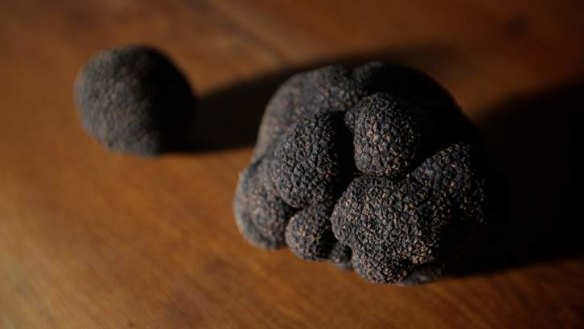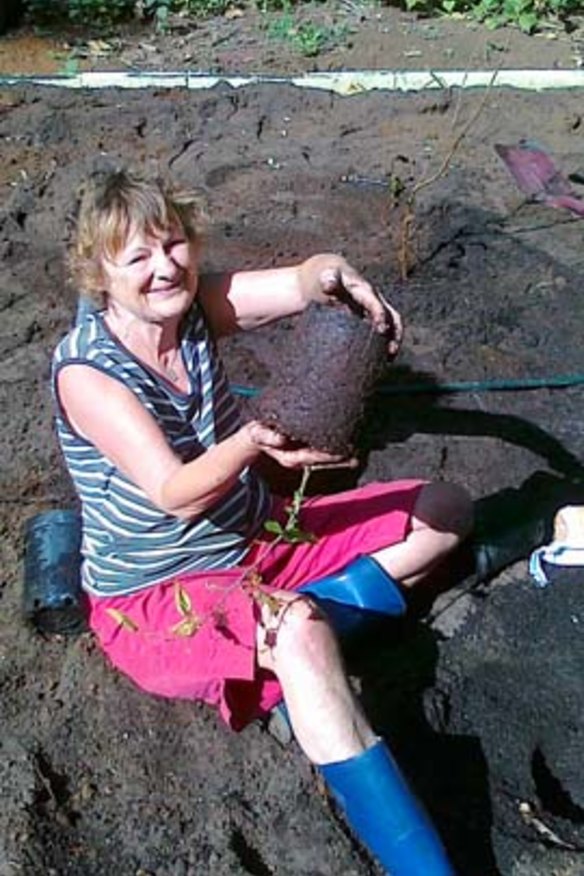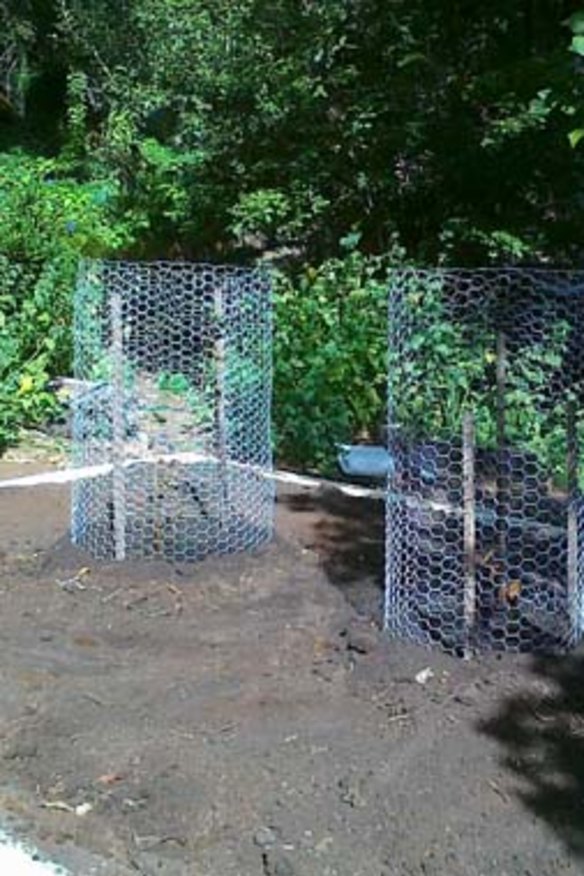From tomatoes to truffles: backyard gardeners set their eyes on a bigger prize
The grow-it-yourself trend is alive and well in backyards, windowsills and rooftops. But how far can it be taken? Can you grow one of the world’s most expensive ingredients in your backyard?

Melanie Kilpatrick's love affair with truffles began at a trufferie in Western Australia. “We were sitting in the sun, eating truffles under the truffle tree, with a few wines in our belly,” she says. The following Christmas, she found an unusual present in her stocking – an inoculated truffle tree.
Before planting the tree in her Perth Hills backyard, Kilpatrick cleared an area in her garden, and filled it with manure and soil. Her son bought the tree from WA's Oak Valley Truffles, a commercial operation that also sells to the public. Under the guidance of truffle manager Fabio Dietos, she planted a second tree, which cost her $50, to increase her chances. Kilpatrick's hazel trees (the roots of oak or hazel tree saplings are inoculated with truffle spores and then planted) are now 12 months old, but still need constant maintenance, including plenty of watering.
“When everyone else goes on holidays, they get a babysitter, a house-sitter, or a dog-sitter. I get a truffle-sitter,” she says.
But this is no get-rich-quick scheme. Yes, truffles can sell for $2500 a kilogram, but on average, it takes four to six years before an inoculated tree will produce its first truffle. Even then, it's hit-and-miss. Industry experts estimate that only one in 10 inoculated trees in a commercial operation will produce truffles.
The two trufferies spoken to by Good Food had not heard of any customers producing truffles from their backyard plants. Yet.
Tim Terry, owner of Truffles Australis, has been selling inoculated trees to backyard gardeners and truffle connoisseurs for about six years. “They're nearly all foodies and they love experimenting,” Terry says. “The idea of growing a fresh truffle in their own backyard is hugely exciting.”

Dietos is another advocate of the DIY approach. “It's a new, exciting, sexy thing to get involved with,” he says. Both businesses are specialist suppliers of truffle-inoculated trees to commercial truffle producers.
Simon Rickard has spent the past four years as a market gardener for Annie Smithers' Bistrot, in Kyneton, Victoria. Three years ago, he decided to experiment with truffles, planting a small trufferie on the property where Smithers lives at nearby Trentham. The holm oak trees were then clipped into a hedge, doubling as a garden feature. While the bistrot has since been sold, if Rickard's experiment pays off, truffles may soon appear on the menu at Smithers' second restaurant, du Fermier, at Trentham.
Sound easy? Not quite. There are key technical components to growing truffles, such as climatic and soil conditions. Attention to detail and a healthy dose of patience are prerequisites.

According to the Australian Truffle Growers Association the production of Perigord black truffles is a risky venture. It requires specific soil conditions and ample soil space for the inoculated tree's root system.
“Since there is a requirement for the tree to have an extensive root system before the truffle fungus can produce fruiting bodies – truffles – it is theoretically unlikely that a tree in a pot, or with a very limited root system, will produce any truffles and certainly not with any consistency,” association president Anne Mitchell says. “I have yet to see convincing evidence.”
So the jury is still out for backyard gardeners. But Rickard is optimistic.
“Give it a go,” he says. “The worst that can happen is you have a really attractive tree or hedge in your garden. The best that can happen is that you'll be digging up thousands of dollars worth of fungi for years.”
Kilpatrick still has a few years to go before she can begin her backyard truffle hunt. But what if fortune doesn't favour the bold?
“I do it for the sheer joy of it and I've thoroughly enjoyed the whole process,” she says. “It's given me an unusual, but rewarding, focus on something I'd never given much thought to.”
Beginners guide to growing Perigord black truffles
1. Climate: Perigord truffles are native to Mediterranean climates in Europe, typified by a hot, dry summer and crisp, frosty winter. Victoria, Canberra, NSW Southern Highlands and Manjimup in Western Australia are truffle-growing regions.
2. Soil: This is make-or-break and there are two crucial factors: PH and soil type. Perigord truffles are native to very alkaline soils in Europe, but most Australian soil is quite acidic. On average, Australian soil has a PH of 5.5; apply horticultural lime to raise the PH to 8.0. You'll also need well-draining soil.
3. Tree: In Australia, it is necessary to buy inoculated trees, as truffles don't grow naturally, unlike parts of Europe. Oak trees are industry standard in Australia. Inoculated trees range from $30 to $50 each and should be purchased from specialist suppliers.
4. Harvesting: Traditionally, trufferies use pigs or dogs to locate truffles. With only one or two trees, you can search by hand. Look for a brûlé (French for burnt), where there's natural dieback around the tree. (It is thought that the mature truffles produce chemicals that kill the grass above where it's growing.)
Are you attempting to produce truffles in your backyard? Login to the comments and share your experiences.
Restaurant reviews, news and the hottest openings served to your inbox.
Sign up